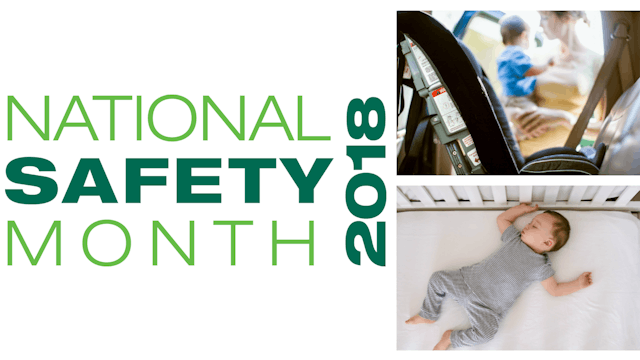Top 5 Causes Of Accidental Child Deaths -- And What You Can Do To Protect Your Kids

No one likes to think about all the “worse-case scenarios” when it comes to our kids. And the fact is, our kids are generally quite safe, and it makes no sense to unnecessarily stress about their well-being or potential demise.
However, that doesn’t mean that we shouldn’t take proper precautions to ensure their utmost safety whenever possible. Tragically, it turns out that several thousand kids die each year from accidents that are entirely preventable, which means that although these are upsetting to consider, learning about them gives us the power to do something to try to prevent them.
The National Safety Council (NCS) just released the top five preventable deaths among children, and they are urging parents to familiarize themselves with these—and then take some proper precautions to prevent these accidents from happening to their own kids.
The top five causes of preventable deaths among kids are as follows, and in this order: (1) suffocation; (2) car crashes; (3) drowning; (4) fires; and (5) choking.
“Preventable, accidental injuries are the third leading cause of death for the first time in United States history, and children, sadly, are not immune,” NSC wrote in a press release. “National Safety Council data analysis released this month [..] show more than 2,000 children younger than 4 are killed each year accidentally.”
In an interview with Scary Mommy, Maureen Vogel, spokesperson for the National Safety Council, provided some further insight about these preventable deaths. Her top tip? Make sure you educate yourself about the causes, and most importantly, what you can do to prevent each of these tragedies.
“The first step to prevention is education,” says Vogel. “If parents know the biggest risks facing their children, the vast majority will take steps to mitigate those risks. Preventing accidental death might seem impossible, but it isn’t. There are very simple things we can all do.”
Car-Related Accidents
Vogel says that probably the accidental death that people are least cognizant of is car-related deaths. Yes, we all know that vehicles can be dangerous, but because driving is something we do daily, it’s not something we think about in very serious terms.
“Driving is such an automatic activity – something most people do every day that has become incredibly routine,” Vogel explains. “When we fall into routines, we tend to forget the risks involved. The problem is, more than 40,000 people die each year in motor vehicle crashes, and in 2016, 511 of these deaths occurred to children ages 4 and younger.”
In terms of car safety, it’s all about using car seats—and installing them properly. 3 out of 4 car seats are not properly installed, says Vogel. She suggests asking staff at the hospital where you have your baby to check your installation, or to visit one of thousands of certified child safety technicians who can access your car seat’s installation. Websites like cpsboard.org and safekids.org. are excellent resources as well.
In terms of the other leading causes of preventable deaths, there are some easy steps you can take to keep your children safe.
Suffocation
“To prevent mechanical suffocation – the leading cause of death for children age 1 and younger – one small but critical action parents can take is keeping the crib clean,” says Vogel. “Remove bumpers, stuffed animals, toys and other items.”
As for the remaining three causes (drowning, fires, and choking), Vogel has some good, common sense advice for those too:
Drowning
Teach your child to swim. You can do so as early as 6 months. Don’t wait. And, of course, always, always supervise bath time.
Fire-Related Incidents
Your child should know at an early age that matches are not toys, and you should stow them out of reach of your kids. You must install smoke detectors and carbon monoxide alarms, and remember to change their batteries yearly.
Choking
Don’t keep toys around with tiny parts, or parts that can be removed. Make sure all toys are age-appropriate as well. And, of course, make sure your child’s food is a developmentally appropriate size and shape to prevent choking.
More information about these safety hazards and how to prevent them can be found on the NSC’s website. Vogel says that if you are interested in accessing your family’s risk for preventable death, the NSC Checkup tool can actually generate a customized report for you, with actionable steps you can take to protect your family.
These are not fun things to think about, but we all need to educate ourselves about these risks, and do everything in our power to keep our precious babies safe.